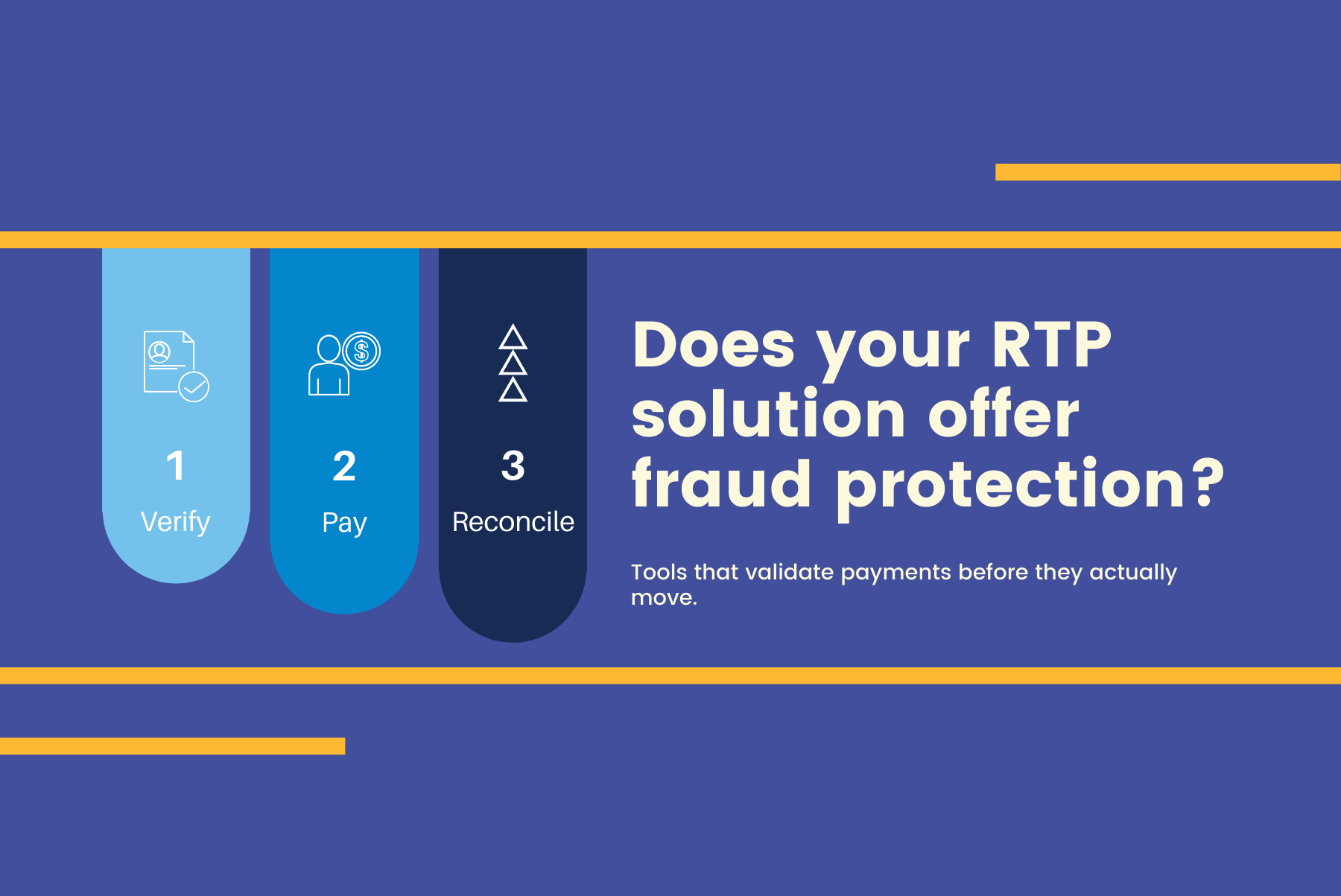One of the biggest questions we get about real-time payments, but that applies to faster payments in general, is what about disaster and fraud? The finality of faster payments is certainly a benefit, but how do you make sure it’s going to the right person or entity? And what about all the hype we’ve heard about Real-time payments attracting fraudsters?
It is important, pre-payment origination, to think about the service that you’re using and the tools available to help you validate that you’re paying the right person before any money actually moves. A lot of companies tend to over complicate this process, but it’s simple.
Verify, Pay, Reconcile
Imagine you are sharing dinner with a friend. Person A picks up the tab on their credit card and Person B decides to send funds to pay their half on a peer-to-peer money platform. Person B verify that they are sending to the right person by matching the person across from them to their photo in the app. If that fails, they can ask the person they would like to send money to for their username in the app. In either scenario, Person B is certain they are sending funds to Person A and not another user before the funds ever leave their account.
(Carl Slabicki, Head of Strategic Payment Solutions at BNY Mellon, talks about Real-Time Payments and associated fraud protection solutions)
B2B and B2C platforms are very similar in this regard. While verification information required may vary based on company or use case, companies can verify that they are sending money to the appropriate person or entity by working with networks to choose what information should be required before payment is sent. This means that companies can require email addresses, phone numbers, PIN’s, security questions, or whatever information they so choose to make sure money is going to the proper person or entity.
Some of that is embedded in things like the Zelle® network, for example, but most platforms have effective methods of offering users the ability to verify their recipients on the front end, creating a safer payment system than has ever before existed. Real-time payments in the US have a substantial advantage over Real-time Payments in other countries because we’ve already had a chance to learn from their mistakes from a security perspective, making the user experience easy, and more.
Using Real-Time Payments on an Omni-Channel Payment Platform
What’s even better is that when you partner Real-time Payments with an Omni-Channel Payment Platform the workflows allow the data and docs to be attached to the payment whether you’re the payee or the payer. And, if only some of your payments can be made via RTP, Omni-Channel platforms allow the data and docs be attached to other forms of payment as well. This makes the option of immediate and automatic reconciliation possible across multiple payment methods.
Many of the countries leading organizations are already utilizing Real-time Payments. Insurance companies are seeing these payments as a big “win” when issuing claims payments quickly to people during unfortunate circumstances. Medical workers are seeing the benefit of real-time payments in prescription rebates because the immediacy means that patients are no longer dependent on cash-float to be able to afford to fill their prescriptions.
There are countless uses for Real-time Payments already and big companies know that their customers have been expecting an easy payments process and exceptional customer service.
An omni-channel payment solution can help organizations achieve success and growth through the pandemic while equipping them with the tools they need for the future, however it unfolds.




